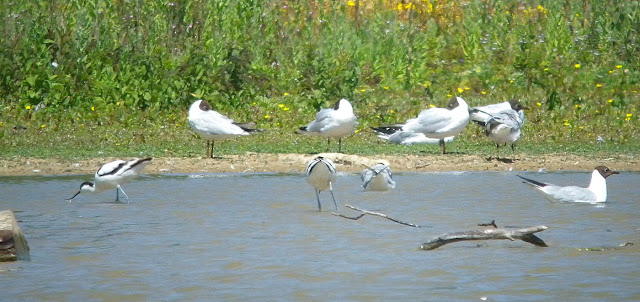Today I visited
College Lake and then onto
Pitstone Hill with ten members of the Bourne End U3A group. We had a great start with amazing views of a
Red-legged Partridge with a family of ten or so chicks, in the car park. Later on, what was probably the same group had moved into the nearby reserve area.
 |
| Feeding time in the car park, the well camouflaged chicks all investigating their surroundings. |
 |
| Red-legged Partridge - The brood safely moved to the reserve area and away from the busy car park. |
Then a visit to Graham's hide and the two main hides on either side of the marsh. This produced several
Redshank, a single
Oystercatcher, 3
Little Ringed Plovers and about 20
Lapwings. The
Black-headed Gull colony was very active with several well grown juveniles present. Most Passerines were heard and not seen but we did see
Reed Bunting and
Reed Warbler.
 |
| Redshank, Lapwing and Oystercatcher |
 |
| Redshank - Presumed different individuals from the one above. |
Most of the group then moved to Pitstone Hill where we had telescope views of Yellowhammer, Linnet and the best bird of the day, Corn Bunting, with two seen.






























